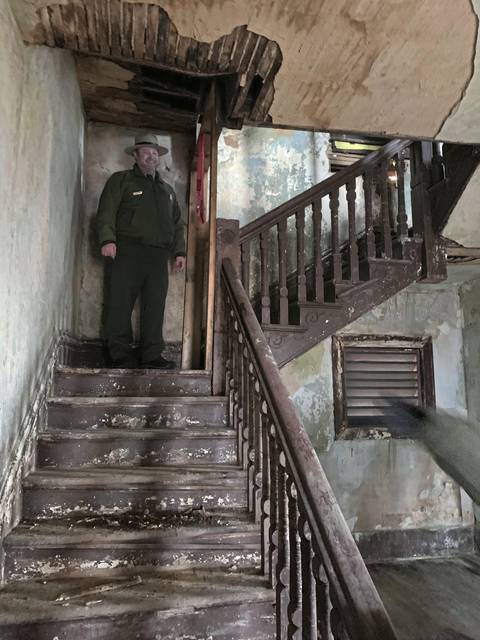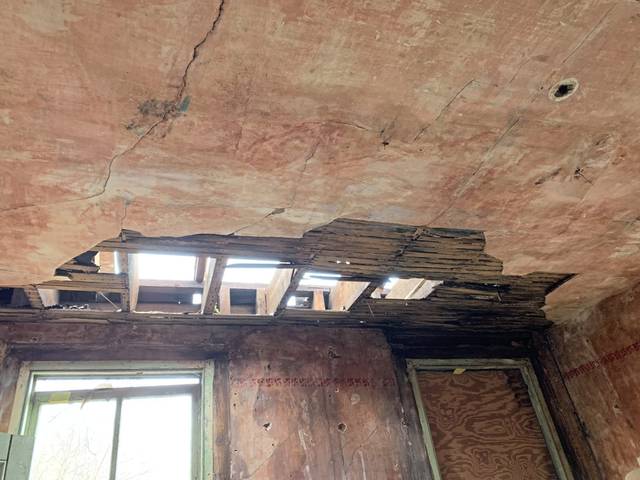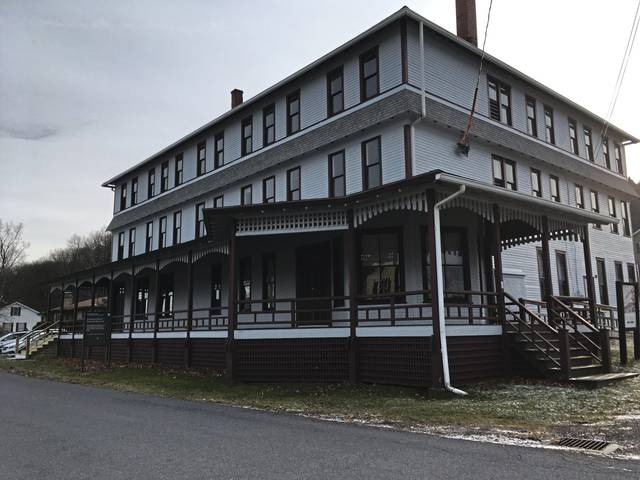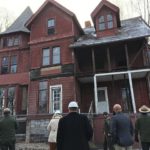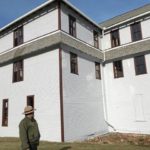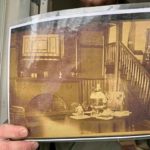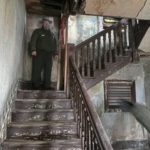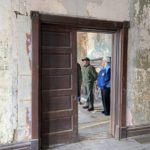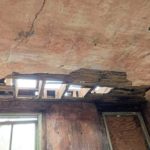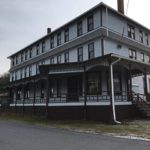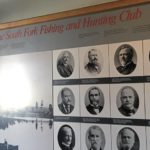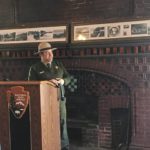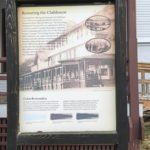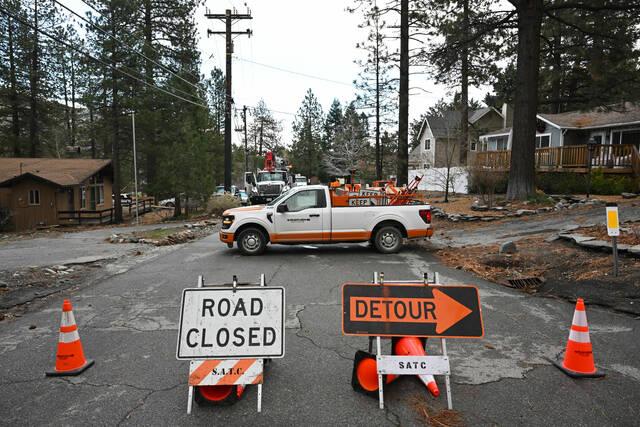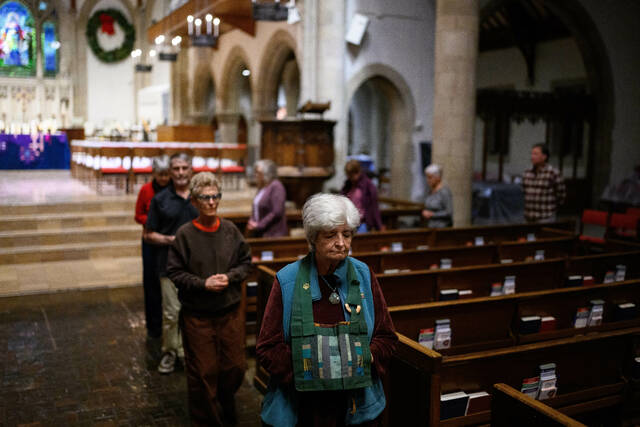After returning home from an enlistment in the Civil War, Mt. Pleasant native Jesse Lippincott pursued interests in various industries, achieving great financial success.
“He owned the exciting company known as the Rochester Tumbler Co. He made the tumblers for all the beverages in all the railroad cars, everywhere. He also dabbled a little bit in steel making. He heavily invested in Bell Telephone when it first started. And then he rounded up a lot of his wealth and bought up all the patents for the phonograph, including the patents of Mr. Thomas Edison,” says National Park Service ranger Doug Bosley.
“Some of his wealth went to build this cottage,” he says, referring to one of the structures under renovation by the National Park Service.
Bosley was among several representatives of the five national parks of Western Pennsylvania, including site superintendent Stephen Clark, hosting recent tours and updates on the Lippincott Cottage and the South Fork Fishing and Hunting Club clubhouse.
Both properties are located in tiny St. Michael, Cambria County.
“We’re here for the parks, and the parks belong to the people,” Clark says.
The National Park Service is working on a $1.2 million project focusing on stabilizing the 25-room cottage, including foundation work and roof replacement.
Funding is not yet secured, but would come from National Park Service project sources, says park service spokesperson Elizabeth Shope.
The goal is to offer public tours like those now available seasonally at the clubhouse, Bosley says.
It was the club’s earthen dam that broke May 31, 1889, the day of the Johnstown Flood.
History shows club members did not replace draining pipes that had been removed, and screens they installed to keep expensive game fish in the lake caught sediment and raised the water level, according to the Johnstown Area Heritage Association.
A rushing wall of 20 million tons of water — what Joshua Manley, management analyst for the Western Pennsylvania Parks, calls a “weapon”— flattened more than 1,800 Johnstown homes and businesses, and killed 2,209 people.
Reviving faded glory
From the outside, the three-story Lippincott “cottage” retains some of the grandeur it must have held more than 100 years ago.
A faded red, the Queen Anne-style structure is one of 16 originally constructed by wealthy members of the club, formed in 1879.
Along with the clubhouse, the National Park Service owns three of the 10 remaining cottages, including Lippincott’s, as part of the Johnstown Flood National Memorial.
Bosley says the cottage is “by far” the largest one still standing, and likely the largest of the 16 constructed.
Lippincott built his cottage in 1885 for $12,000, Bosley says — about $300,000 in today’s dollars, according to online inflation calculators.
The cottage’s deteriorating porch has been removed and placed in storage. Every window and exterior door will be removed for preservation. Asbestos, mold and debris have been removed in recent months.
Inside the front parlor, floor to ceiling windows could be opened to let in Lake Conemaugh’s cool breezes; original pocket doors separate rooms.
Stairways still stand, but sunlight, rain and snow pour through holes in the roof.
“This home has good bones, for little being done to it for so long,” Bosley says.
Privileges of prosperity
Traveling by train, club members — many from the Pittsburgh area — took up seasonal residence in the 47-room Main Street clubhouse or in one of the cottages they built along the lake shore.
There they spent their summer days leisurely sailing, fishing and socializing — until the dam broke.
Afterward, the clubhouse served as temporary housing for survivors.
In 1907, St. Michael was developed as a coal mining community. The remaining cottages, largely vacated by their owners, became managers’ homes or were turned into duplexes.
New paint, original colors
A recent $242,000 project includes completion of an exterior paint job for the clubhouse, returning its original color scheme of feather gray, reddish brown trim and black window frames. The effort, including replacing rotted wood and window sills and window glazing, was completed in December, says Ron Seanor, park service maintenance management specialist.
Following several years of renovation, the Main Street property is open for seasonal tours; its first floor black box theater is used for interpretive school programs.
St. Michael native David Knepper says he feels a “kinship” with the clubhouse.
“My two great aunts worked here. My grandpap, their brother, would tell me tales about the aftermath of the flood,” he says. “Now this diamond in the rough will be a true diamond. When this is done it will be spectacular.”
In addition, Manley says a phased-in, two-year effort at lake bed rehabilitation will begin in January, weather permitting.
Planned are clearing, wetlands protection, hand-cutting of trees obstructing views and a long-term management strategy.
“You cannot tell the story of the Johnstown Flood without talking about the South Fork Fishing and Hunting Club, Lake Conemaugh and what was the South Fork Dam,” Manley says.






